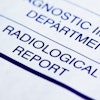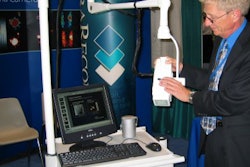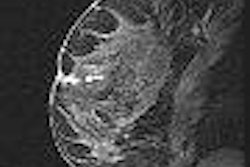Head and neck surgeons can readily incorporate office-based ultrasound procedures into their practice, according to an article in Otolaryngology - Head and Neck Surgery. Office-based ultrasound offers an easy and cost-effective tool to the surgeons, the authors report.
"Office-based ultrasound provides an easy and cost-effective tool to the head and neck surgeon," wrote authors from the University of Arkansas for Medical Sciences (UAMS) and the Central Arkansas Veterans Healthcare System.
To determine cost considerations and strategies for incorporating ultrasound in a head and neck practice, the researchers performed a retrospective chart review of office-based ultrasound procedures from 2001 to 2005 at their academic medical center. They also examined billing and coding for ultrasound and ultrasound-guided fine-needle aspiration (USFNA) (Otolaryngology - Head and Neck Surgery, December 2006, Vol. 135:6, pp. 884-888).
In the Arkansas Cancer Research Center (ACRC) at UAMS, one physician (physician A) performed essentially all office-based US and USFNA between January 2002 and June 2005. That physician submitted CPT codes of 76536 for ultrasound of the neck or thyroid and 76942 for ultrasound needle guidance, according to the researchers.
Based on interviews with physicians A and a second physician who had implemented office-based ultrasound into their practice, the authors determined that a basic machine to perform ultrasound and USFNA would have a transducer from 7.5 to 12 MHz, color Doppler capability, and a built-in camera for capturing images.
"The consensus was that a machine with these specifications is well-suited to perform thorough head and neck ultrasound examinations," they wrote. "A system with these specifications can be found from almost all major manufacturers for $20,000 to $40,000."
As for training, there are currently no certification requirements for implementing office-based ultrasound into a practice, according to the authors. However, they recommended that head and neck surgeons take an ultrasound certification course, such as those provided by the American College of Surgeons (ACS), American Association of Clinical Endocrinologists (AACE), the Radiological Society of North America (RSNA), and the American Academy of Otolaryngology - Head and Neck Surgery, which offers the ACS course.
Even after completing certification courses, however, there will be a period before a physician becomes comfortable and efficient in performing USFNA and ultrasound, according to the authors.
"This may limit the number of procedures that can be performed initially, due to time commitments," they wrote. "However, since there is minimal setup and turnover time with ultrasound, once the procedure is mastered, the productivity will increase."
For example, physician A reported that he performed 200 procedures before he could consistently perform a complete and comprehensive diagnostic ultrasound of the six neck levels in five minutes, according to the authors.
Based on practice volume, specific CPT coding, and Medicare reimbursements, office-based ultrasound equipment and certification costs could be offset in one year, according to the authors.
"There are necessary up-front time and monetary investments for initial training and equipment, but there are significant benefits to the patient and to the surgeon," the authors wrote. "Appropriate billing is essential to the implementation of any new technology."
By Erik L. Ridley
AuntMinnie.com staff writer
January 5, 2007
Related Reading
First-trimester Down's syndrome screening advised for all, January 3, 2007
U.S. government issues update on WRMSDs in sonography, December 25, 2006
Ultrasound can identify some patients with subclinical cardiac risk, December 20, 2006
CEUS stars in differentiating PVT in cirrhotic patients, December 7, 2006
Ultrasound aids jugular vein catheterization, December 4, 2006
Copyright © 2007 AuntMinnie.com




















